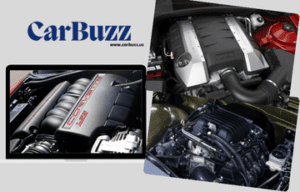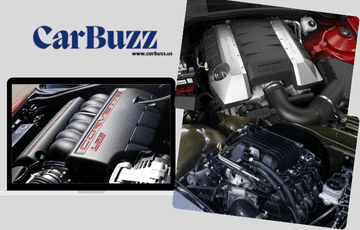Many auto enthusiasts around the world know that General Motors, or GM as it is often abbreviated, is one of the largest and most reputable automotive corporations globally and therefore makes a great many legendary V8 engines. As street cars to utilitarian vehicles, their V8 range has offered several strips of requirement as well as desire. But there is one V8 engine which can be considered the most universal, the most versed and the longest lived engine ever created by General Motors. This article will illustrate the various form and application of this engine as well as the rationale behind GM as to why this has been the most versatile V8 ever created.
The Early Years: Big Block Basics
Now that we are ready to tell the story of the most adaptable V8 engine, it is important first to set the background on the engine. The story of the V8 engines by General Motors begins in 1949 when the manufacturer brought the first one referred to as “Big-Block” generation. The 4.3L OHV V8, offered in the 1949 Oldsmobile 88, was the first stop on the path to the ultimate V8, easily the most versatile engine general Motors ever produced.
At the time the Big Block engines were touts as engines for the future of cars, trucks, boats and motorcycles, and while still used to this day, mostly in the 4.3L to 7.0L displacements, they’re no longer in production. These engines had such virtues like durability, power and flexibility, but they were bulky and heavy of course. The success of the Big Block led to the creation for a smaller lighter and more efficient V8 engine that in turn to the creation of the Gen IV engines.
Although Company’s succession of preliminary generations of internal combustion engines, such as the Gen III V8, is deserving of recognition, it is the advent of the Gen IV Engine Family that is most responsible for recent advances in cars’ ability.
The Gen IV is a family of V8 Motors that was first produced in 2003. These engines were actually the beginning of what GM aimed at in their V8 engines – to make them lighter, more fuel friendly and more powerful. It had features like variable valve timing Active Fuel Management Improved cylinder head for the precipitation of advanced technologies. Being Gen IV engines highly modular, they were designed for installation in almost any type of car, from sporty coupes to SUVs, from trucks to racers.
The Most Adaptable V8: The LS Series
The Gen IV series’ most famous engine is the LS series of engines debuted in the 2005 Chevrolet Corvette. The LS engines would soon turn out as the most versatile, versatile and longest lasting engines that would be designed at General Motors. A large number of LS engines based on the 6.0L/6.2L Gen IV block saw use in numerous GM vehicles with the 4.8L and 5.3L engines churning out power ranging from 250 to 320 horses while the 6.0L and 6.2L engines produced over 400 horses, the 7.0L engine generated in access of 650 horsepower. Every LS engine is layout-based, which means that no matter the size, all LS engines are built using similar architectures that permit interchangeability in terms of the parts and the components used.
There is nothing wrong with having a design that can be easily modified because this is one of the main characteristics that make the LS series of engines so versatile; they are modularity. With little exception all the cylinder heads, intake manifolds, as well as valve covers, are shared among the various displacements. Consequently, the modification of the engine known as the LS engine is more flexible and easier to do as compared to other other types of engines.
However, it is also important to know that the LS engines are reliable and reliable, which makes all the business of this type of hybrid engines obvious. The LS engines have been applied in passenger cars, trucks, boats, race cars among other applications. To tell the truth, LS engine has become so widespread in the racing sphere that it is referred to as the ‘Sher Swiss Army Knife of racing.’ The LS engine is known for its high level of sturdiness and its ability to perform in high endurance track circumstances as well as usual, practical road conditions.
The LS Engine’s Legacy
The LS engines have also demonstrated the versatility in racing applications, however they are also incorporated in street machines and trucks. The Gen IV engine family continued through Gen V, but as its LS engines were replaced by newer smaller engines for more fuel efficient engines. Nevertheless, the LS engine is still being produced to this date through a variety of aftermarket firms committed to carrying forward the good name of these engines.
Everything from swapping an LS engine to high-performance modifications have continued to gain popularity and to this day fresh products are added to the market each year. Considering the LS engine an automotive legend and an excellent contribution to the market of the V8 engines, it can be defined that, therefore, the LS engines.
Conclusion
In conclusion the LS series of engines, that are part of the Gen IV engine family of general motors, is by a long shot probably the most versatile V8 ever built. Not only can an LS engine be customized for any Horsepower range needed, but its reliability and the popularity of it among racers and car lovers make the LS engine completely revolutionize the V8 engine market. It remains ever relevant and continues to be part of the developments of new unique products that are being made today. For example, LS series of engines are among the best when it comes to an engine that can be used in different power applications.



